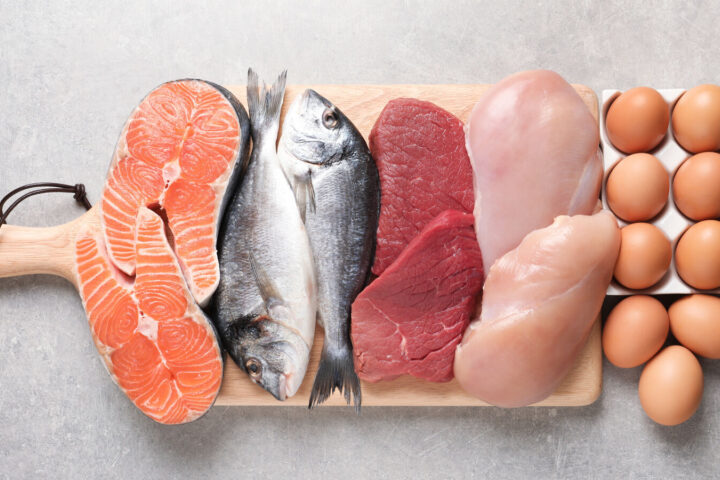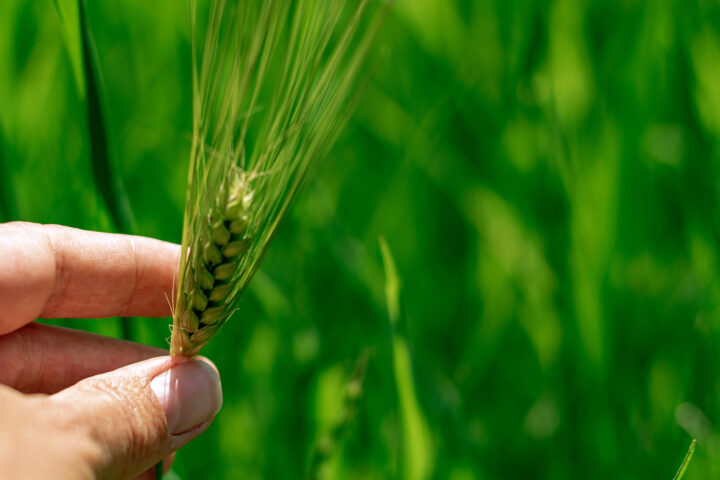«Agriculture plays a major role»
Jan Grenz is a lecturer at the School of Agricultural, Forest and Food Sciences (HAFL). In his text he looks at the historical development of the term «sustainability» and shows that ultimately everyone must contribute to a more sustainable environment.
Friday, September 17, 2021
An internet search for «sustainable agriculture» yields 301 000 hits. One of them is Article 104 of the Swiss Federal Constitution, according to which the federal government must ensure «sustainable and market oriented production.» Another is by the Swiss Federal Department of Foreign Affairs, which presents the United Nations Sustainable Development Goals, including Goal 2: «End hunger, achieve food security and improved nutrition and promote sustainable agriculture.» Many of the results are for companies, including Syngenta, John Deere, Fenaco and a number of dairy companies.
So why add yet another article? Because it's worth taking a look at the roots of sustainability. The term has been used throughout history. In 1713, Hans Carl von Carlowitz, the chief mining administrator for Germany’s Erzgebirge mountains, published the book «Sylvicultura oeconomica» about the «sustainable use» of forests. At the time, ore mines, smelters and a growing population needed ever increasing amounts of wood, and a wood shortage loomed. Carlowitz promoted the idea of not removing more wood from the forest than what could regrow during the same period. While this may seem obvious, it requires precise knowledge of growth and timber extraction. This was achieved through measurements, mapping, monitoring and bans. There was another reason why pressure on forests did not increase despite economic and population growth: The rise of coal-fired machines. Coal deposits had to be exploited, but they did not have to be maintained like forests. Sustainability was not a concern on the new industries.
Despite significant progress, agriculture in the time of our great grandparents around 1900 was vastly different from where it is now. A third of the population was involved in agriculture. Most of the 240,000 farms had five hectares of land or less, and many were used for subsistence farming. The hectares yielded a ton of wheat or five tons of potatoes, the cow provided 2,800 kilograms of milk. Tractors, nitrogen fertilizer, antibiotics, radio, cars and vacation travel were future concepts. At the time, a twenty-year-old man had a life expectancy at birth of around 40 years, and child mortality was high. Chemical fertilizers, tractors and pesticides slowly brought the industrial era to the land. Agriculture became a capital-intensive profession. Some were uncomfortable with the dependency on industry and capital, which led to the rise of organic farming. Many ideas for healthy farming and food were tried. At the time, no one used the forestry term «sustainable.»
Developments accelerated and people acquired ever more material things. A household had about 180 objects in it in 1900 – today we have 10,000. We use eight times as much energy, live twice as long, get eight times as much from the land and three times as much from cows. We live in a climate that is warmer by 1.8°C and release thousands of tons of nutrients into the environment each year. The fact that the price of well-being would be so high was discussed as far back as the 1970s. This led to a rebirth of sustainability in politics. In 1987, the World Commission on Environment and Development said that sustainable development must do both things: It must meet the needs of all people, including those in the future. And it must protect our natural resources. At the Earth Summit in Rio de Janeiro in 1992, nearly all countries committed themselves to sustainable development and they continue to follow sustainability goals today. While the population and the economy have grown enormously since the time of Carlowitz, the proportion of people working in agriculture has fallen to 3 percent and agriculture’s share of economic output has declined to 0.6 percent. Some see an imbalance here, viewing agriculture as a sector that causes a lot of pollution while contributing little economically. This is a misguided view. Agriculture represents our greatest connection with the natural environment and is inseparably linked with society as a whole. In a hundred-story skyscraper, no one would criticize the residents of the ground floor for how they use their land or for the fact that water enters the building and wastewater departs it through their floor.
Agriculture plays a major role in achieving sustainable development. But we are all responsible for here. Organic and integrated agriculture are two systems in Switzerland that effectively help to achieve sustainable agriculture and that enable consumers to assume responsibility. There are also a number of success stories. We can learn how to overcome the coming crises from these stories. For example, we still need to measure, map, monitor and ban. But above all, we will only develop in a sustainable way only if we do it together.
Jan Grenz is a lecturer at the School of Agricultural, Forest and Food Sciences (HAFL). This article was first published in the anniversary supplement to «Schweizer Bauer» on September 11, 2021.
Related articles

Sales bans due to PFAS: Should we be worried?
After spectacular sales bans on fish and meat due to PFAS contamination, consumers are asking themselves: How dangerous are these substances really – and what can still be placed in the shopping basket without concern?

Assess scientifically instead of banning indiscriminately
The debate surrounding PFAS is gaining momentum in Switzerland. At its core are questions about potential risks to human health and the environment, as well as future regulatory approaches. A differentiated, science-based approach is essential – as emphasised by scienceindustries in a short interview with Dominique Werner, Head of Chemicals Regulation.

Event: Building Resilience in the Age of Uncertainty
International Conference on Resilience | January 15–16, 2026 | Zurich–Baden

How German Experts View New Breeding Techniques
In hardly any other country is the idyllic image of organic farming cultivated in the public sphere as carefully as in Germany. Naturalness and rural authenticity are powerful mental refuges for many Germans. Against this backdrop, it is hardly surprising that resistance to new breeding techniques is strong – and that ignorance about the realities of organic farming sometimes appears almost deliberate.

